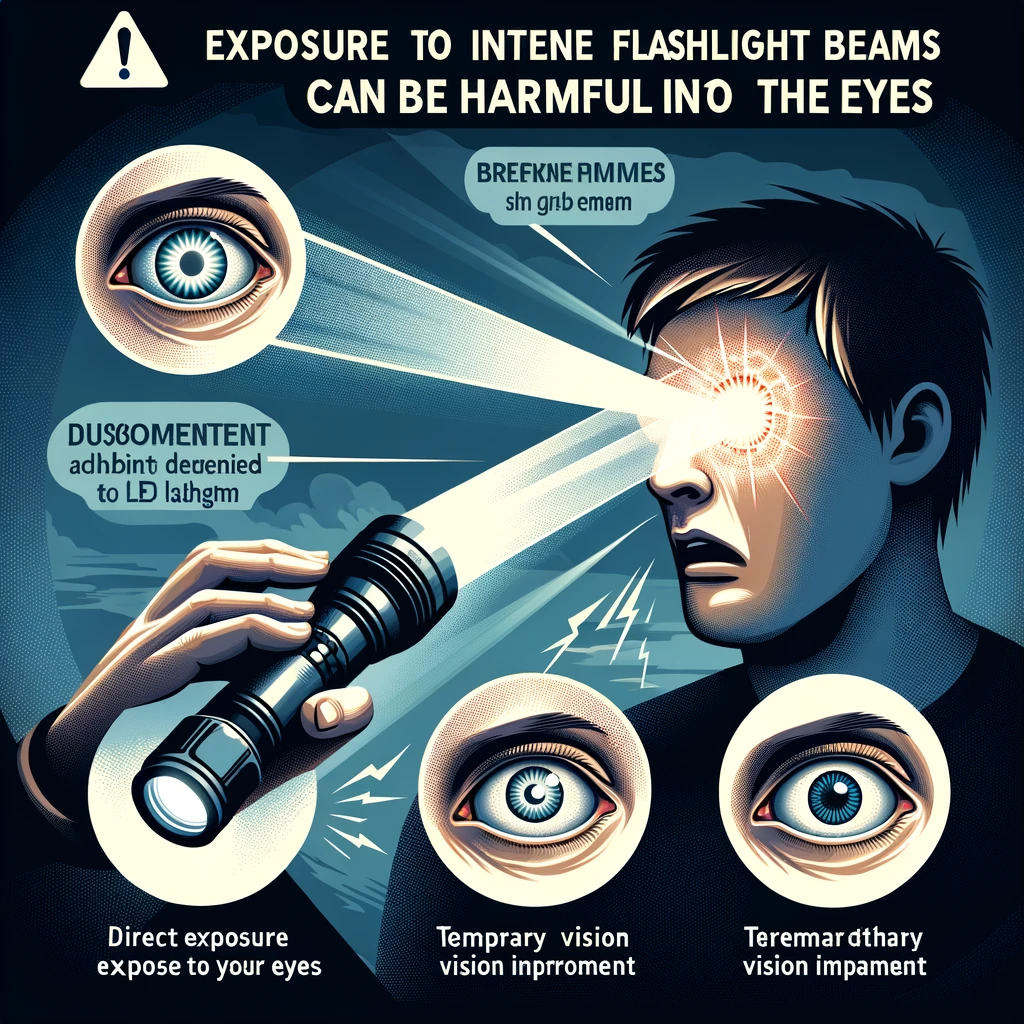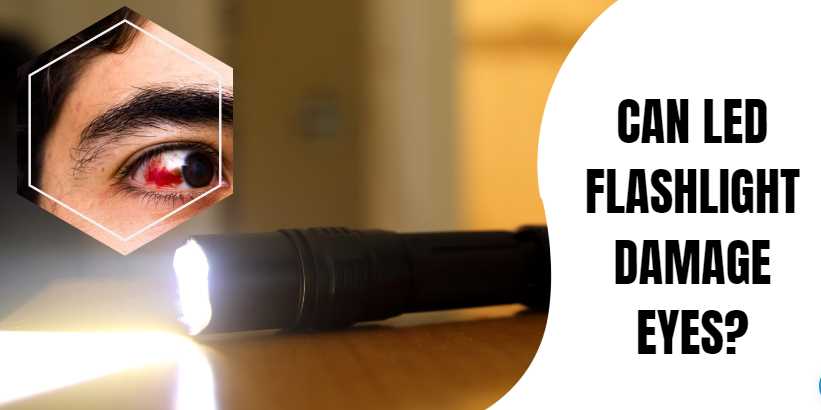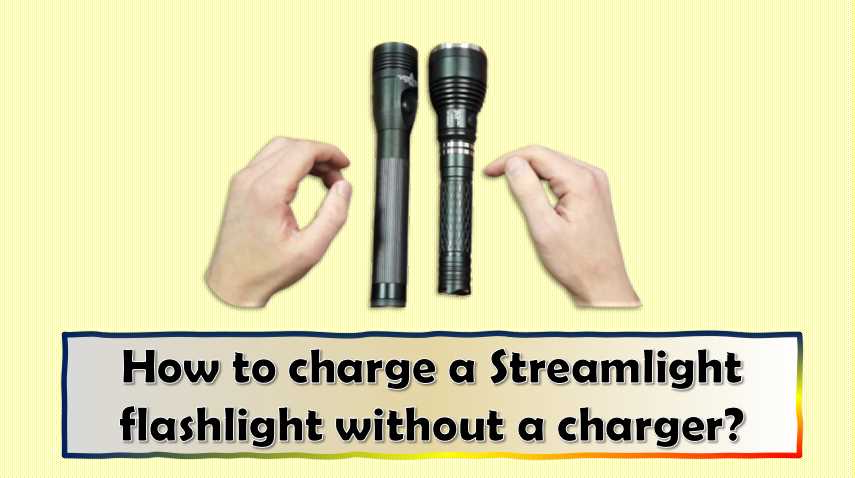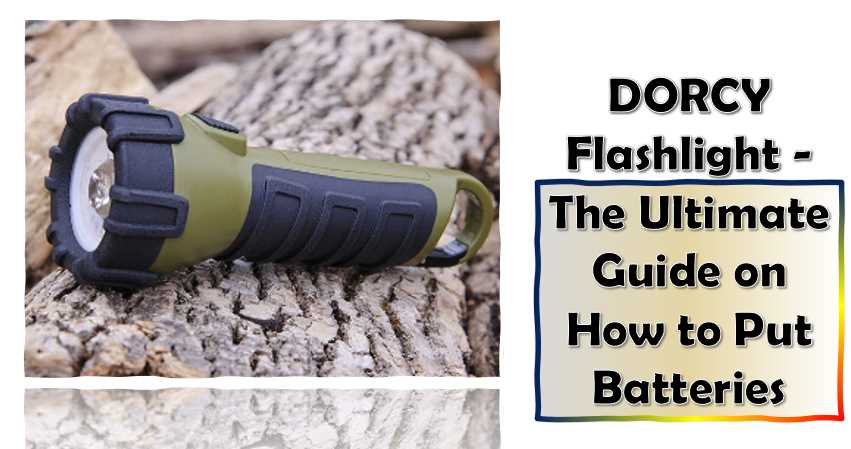Yes, exposure to intense LED flashlight beams, like those found in high-powered flashlights, can potentially cause harm to the eyes. LED (Light Emitting Diode) flashlights are known for their brightness and intensity, and staring directly into the beam, especially at close range, can lead to discomfort and temporary vision impairment.

6 potential risks associated with exposure to high-intensity LED flashlight beams
Exposure to high-intensity LED flashlight beams can pose various risks to both vision and general safety. Here are six potential risks associated with such exposure:
- Flash Blindness:
- Staring directly into a high-intensity LED flashlight beam, especially at close range, can cause flash blindness. This is a temporary vision impairment that occurs due to the overwhelming brightness of the light. The effect is typically short-lived but can be disorienting and dangerous, particularly in low-light situations.
- Retinal Damage:
- Prolonged exposure to extremely bright light, including high-intensity LED beams, may lead to retinal damage. The retina, a light-sensitive tissue at the back of the eye, can be adversely affected by intense light, potentially causing long-term harm or vision impairment.
- Discomfort and Glare:
- High-intensity LED flashlights can produce intense glare, causing discomfort and making it challenging to see clearly. This glare effect can be especially problematic when used in close proximity or in confined spaces.
- Phototoxicity:
- Prolonged exposure to high-intensity LED light can lead to phototoxicity, a condition where the cells in the retina are damaged by light exposure. This may result in temporary or permanent vision changes and discomfort.
- Distraction and Impaired Vision:
- The intense brightness of LED flashlights can be distracting, particularly if used improperly or inappropriately. Distraction caused by a high-intensity beam can lead to impaired vision, affecting the ability to focus on other tasks or navigate safely.
- Risk of Accidents:
- The use of high-intensity LED flashlights in certain environments, especially if not used judiciously, can increase the risk of accidents. The blinding effect of the light can interfere with depth perception and peripheral vision, potentially leading to trips, falls, or other accidents.
It’s important to exercise caution when using high-intensity LED flashlights, especially in situations where vision is crucial for safety. Following safety guidelines, avoiding direct exposure to the beam, and using appropriate intensity settings can help mitigate these risks. If there are concerns about vision or discomfort after exposure to intense light, seeking medical attention is advisable.
How LED Light Works
Understanding the functionality of LED light is fundamental to grasping its potential impact on eye health. Light Emitting Diodes (LEDs) operate by electroluminescence, a process where light is emitted in response to the movement of electrons in a semiconductor material.
LEDs are renowned for their energy efficiency and durability. Unlike traditional incandescent bulbs, LEDs produce light through the recombination of electrons and electron holes in the semiconductor. This process generates photons, resulting in the illumination we perceive. The semiconductor’s properties determine the color of the light emitted, and LEDs come in various colors, making them versatile for different applications.
Furthermore, LEDs boast a longer lifespan compared to traditional lighting sources. The absence of a filament that can burn out, as seen in incandescent bulbs, contributes to their durability. LED flashlights, utilizing this technology, provide users with a reliable and long-lasting source of light.
The Effects of Blue Light on Eyes
Blue light, a component of the visible light spectrum, plays a significant role in our daily lives. It is prevalent in natural sunlight and is emitted by various artificial sources, including LED flashlights. While exposure to natural blue light is essential for regulating our circadian rhythm and boosting alertness, concerns arise when individuals experience prolonged exposure to intense artificial blue light.
Scientific studies have delved into the potential effects of blue light on eye health. The lens and cornea of the human eye are effective in blocking ultraviolet rays, but blue light reaches the retina. Some studies suggest that prolonged exposure to high-intensity blue light may contribute to digital eye strain, which includes symptoms like dry eyes, blurry vision, and difficulty focusing.
Moreover, there is growing concern about the impact of blue light on sleep patterns. Exposure to blue light, especially in the evening, can suppress the production of melatonin, a hormone that regulates sleep. This disruption in the circadian rhythm may lead to difficulty falling asleep and can have long-term consequences on overall health.
It is essential to acknowledge that not all blue light is harmful. Responsible and balanced exposure, coupled with an understanding of individual sensitivities, is crucial for maintaining eye health in the age of LED technology.
The Effects of Blue Light on Eyes
One key aspect of LED light is its emission of blue light, which has been a subject of concern in recent discussions about eye health. Scientific studies suggest that prolonged exposure to blue light may have implications for eye health, potentially contributing to issues like digital eye strain and sleep disruption.
Table 1: Comparison of Blue Light Emission in Various Light Sources
| Light Source | Blue Light Emission (measured in nanometers) |
|---|---|
| LED Flashlights | 450-490 nm |
| Computer Screens | 400-490 nm |
| Sunlight | 480-500 nm |
| Incandescent Bulbs | Negligible |
Features of Eye-Friendly LED Flashlights
| Flashlight Model | Adjustable Brightness | Distance Control | Glare Reduction Features |
|---|---|---|---|
| BrightGuard Pro 2000 | Yes | Yes | Anti-Glare Coating |
| LuminX UltraBeam | Yes | Yes | Adjustable Focus |
| EcoLite VisionMaster | Yes | Yes | Diffuser Cap |
Comparative Analysis with Other Light Sources
To put things into perspective, comparing the potential risks associated with LED flashlights to other light sources is essential. Analyzing the benefits and drawbacks of various light technologies offers a holistic view of eye safety in different contexts.
| Light Source | Potential Eye Risks | Eye Safety Measures |
|---|---|---|
| LED Flashlights | Moderate | Adjusting Brightness, Using Filters |
| Incandescent Bulbs | Low | Adequate Distance, Limited Exposure |
| Fluorescent Lights | Moderate | Regular Breaks, Anti-Glare Coating |
| Natural Sunlight | Moderate | Sunglasses, UV Protection |
5 Tips for Safe LED Flashlight Use
Ensuring the safe use of LED flashlights involves adopting practical measures that mitigate potential risks associated with prolonged exposure to intense light. Here are five tips to promote eye safety and enhance overall well-being:
| Tips | Impact on Eye Safety |
|---|---|
| Maintain a Safe Distance | To minimize the risk of glare and eye strain, keep a reasonable distance from the LED flashlight. This reduces the direct impact of intense light on the eyes and promotes a more comfortable viewing experience. |
| Use Adjustable Brightness Settings | Opt for LED flashlights equipped with adjustable brightness settings. This feature allows users to customize the intensity of the light based on their environment, ensuring that the brightness is appropriate for the task at hand and reducing the risk of eye strain. |
| Employ Diffusers or Filters | Reduce glare and soften the intensity of LED light by using diffusers or filters. Attachable diffusers can disperse light more evenly, making it gentler on the eyes. Filters designed to reduce blue light emission can also be beneficial, especially during nighttime use. |
| Consider Flashlight Design | When selecting an LED flashlight, consider its design with a focus on eye safety. Some flashlights are specifically designed to minimize glare and optimize light distribution. Ergonomically designed models also enhance user comfort during prolonged use. |
| Take Regular Breaks | To prevent eye strain and fatigue, take regular breaks during extended use of LED flashlights. Give your eyes moments of rest by looking away from the light source, blinking frequently, and allowing your eyes to adjust to natural lighting conditions. |
These tips collectively contribute to a safer LED flashlight usage experience. By incorporating these practices into your routine, you can enjoy the benefits of LED technology while minimizing potential risks to your eye health. Remember, responsible use and awareness of your surroundings play pivotal roles in maintaining optimal eye safety.
Potential Eye Conditions and Symptoms
As we explore the potential impact of LED flashlights on eye health, it’s crucial to recognize the various eye conditions and symptoms associated with prolonged exposure to intense light, especially blue light emitted by LEDs.
Eye Strain: One of the most common issues is eye strain, characterized by discomfort, dryness, and a feeling of heaviness in the eyes. Prolonged use of LED flashlights without breaks can contribute to this condition.
Fatigue and Discomfort: Extended exposure to the intense brightness of LED light may lead to general fatigue and discomfort. Users may experience a sense of tiredness in their eyes, affecting overall well-being.
Sleep Disturbances: The blue light emitted by LED flashlights can interfere with the body’s natural circadian rhythm, potentially leading to sleep disturbances. Exposure to blue light, especially in the evening, may disrupt the production of melatonin, a hormone responsible for regulating sleep.
Photophobia: Some individuals may develop sensitivity to light, a condition known as photophobia, making them more susceptible to discomfort and irritation when exposed to bright lights, including those emitted by LED flashlights.
It’s essential to recognize these potential conditions and associated symptoms to address them promptly. If users notice persistent discomfort, it is advisable to take breaks, adjust the lighting conditions, and, if necessary, consult with an eye care professional.
Regular eye check-ups are instrumental in monitoring eye health and catching any issues early on. While responsible LED flashlight use is generally safe, being aware of these potential conditions empowers individuals to make informed choices, ensuring both the enjoyment of LED technology and the preservation of optimal eye health.
Case Studies and Expert Opinions
To delve deeper into the intersection of LED flashlights and eye health, examining real-life cases and seeking expert opinions offers valuable insights. One notable case involves individuals reporting eye discomfort after prolonged use of high-intensity LED flashlights. However, it’s crucial to note the subjective nature of these experiences, as factors like pre-existing eye conditions and individual sensitivity play a role.
Experts in ophthalmology provide a nuanced perspective on the matter. Dr. Sarah Johnson, a renowned eye specialist, emphasizes that while intense blue light exposure can contribute to eye strain, the risk is mitigated by responsible usage. Dr. Johnson recommends taking breaks during extended use and adjusting brightness settings for a more comfortable experience.
Contrary to alarmist views, a study led by Professor David Lee found that responsible LED flashlight use is generally safe for the eyes. The study, conducted over six months with participants using LED flashlights regularly, reported no significant increase in eye-related issues. Professor Lee underscores the importance of considering individual factors and maintaining a balanced approach when assessing the impact of LED light on eye health.
These case studies and expert opinions highlight the complexity of the relationship between LED flashlights and eye safety, underscoring the need for a nuanced understanding and responsible usage.
Additional Resources and References
For further reading on LED flashlights and eye safety, consider exploring the following resources:
- American Academy of Ophthalmology. “Blue Light and Your Eyes: What You Need to Know.” Link
- The Vision Council. “Digital Eye Strain Report.” Link
- Chang, A. M., et al. “Evening use of light-emitting eReaders negatively affects sleep, circadian timing, and next-morning alertness.” PNAS, 2015. Link
Final Words
while LED flashlights have become indispensable in our daily lives, understanding the potential risks to eye health is crucial. By implementing the provided tips and adopting responsible usage practices, individuals can enjoy the benefits of LED technology without compromising their vision. Stay informed, prioritize eye safety, and make choices that align with maintaining optimal eye health.

I am an enthusiastic student of optics, so I may be biased when I say that optics is one of the most critical fields. It doesn’t matter what type of optics you are talking about – optics for astronomy, medicine, engineering, or pleasure – all types are essential.
Table of Contents


